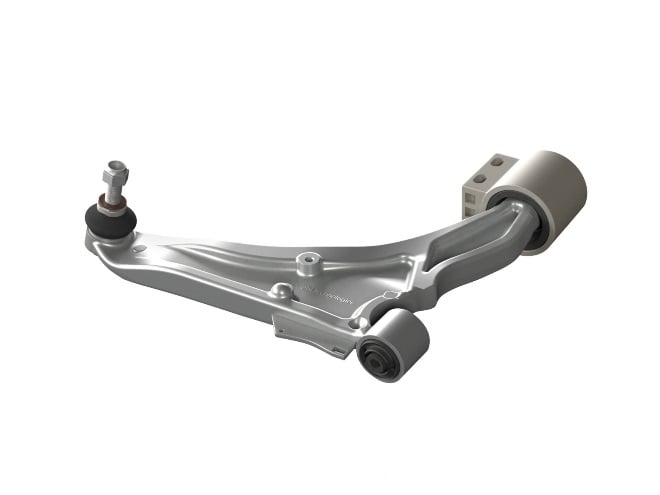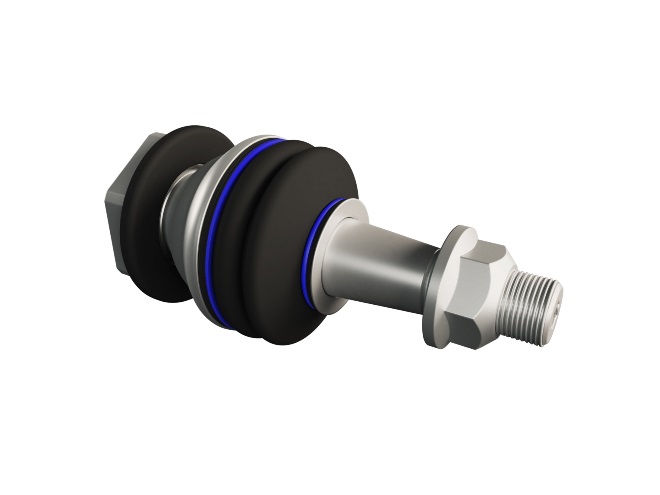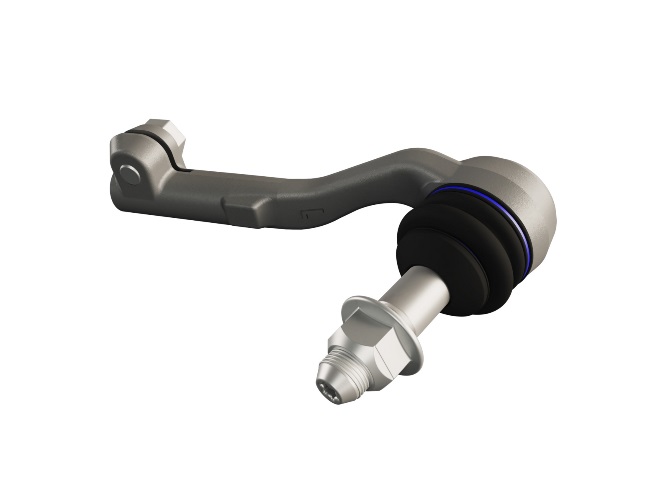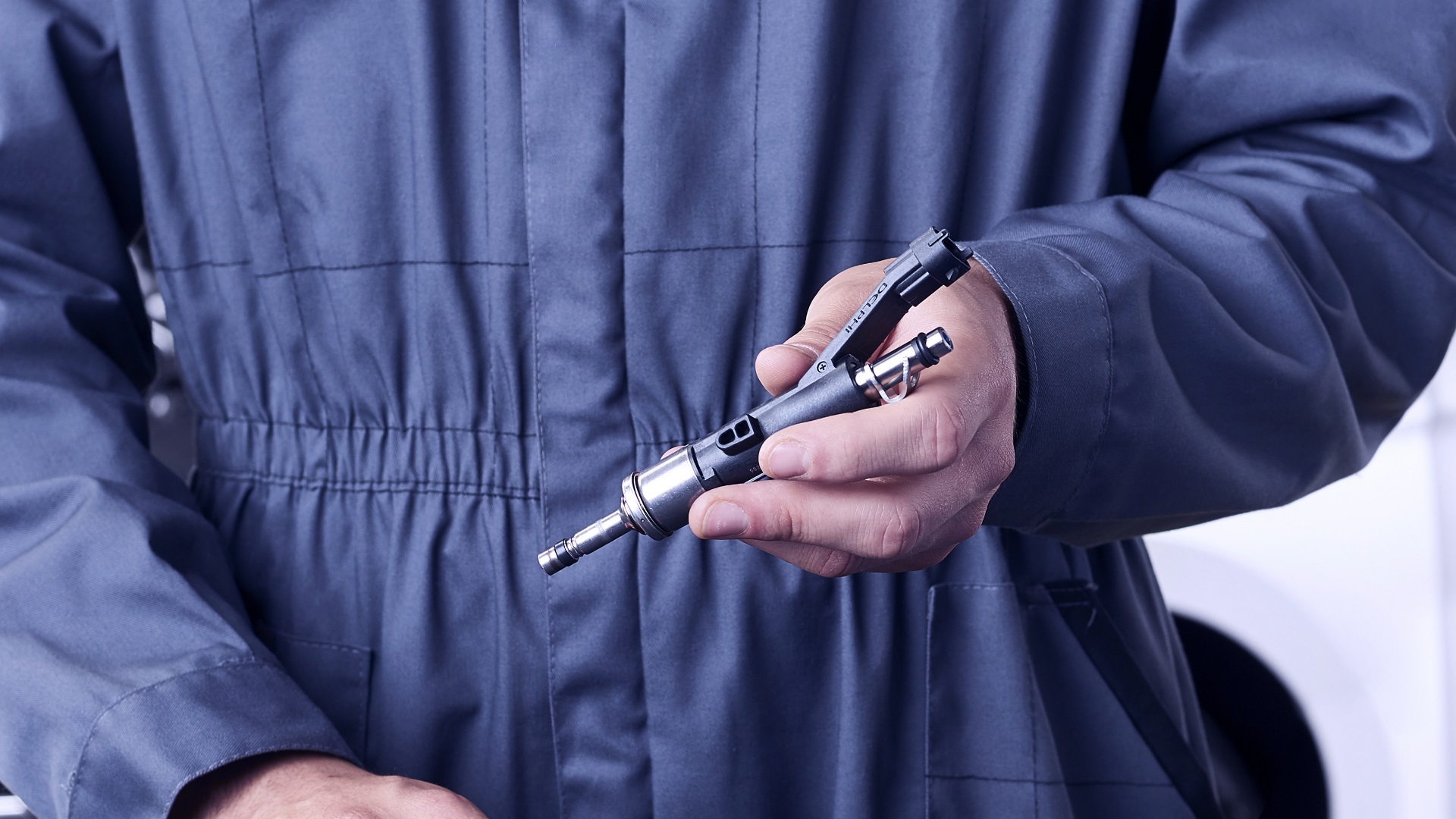Resource Highlights
In this article you will find out how to service and/or replace ball joints.
Just like all steering and suspension system components, the ball joint is a safety-critical part. A worn ball joint can compromise a vehicle’s ride and handling. In the event of a failure, however, the results can be much worse. As an industry leading supplier of steering and suspension components, Delphi can provide an insight into the role of the joint, what to look out for in a failing joint and how to replace it before it gets that far.
What is a ball joint?
The ball joint is an essential part of a vehicle’s steering and suspension system, that is typically used in the front end. Put simply, it acts as a pivot between the vehicle's wheels and suspension, allowing the vehicle to be steered, whilst also ensuring a comfortable ride. Since it constantly pivots through multiple planes and angles, much like a human hip joint, it is subject to significant stress and wear.
What are the different types of ball joint?
There are two types of ball joint. Why is it important to know this? Because they require slightly different approaches when it comes to servicing. Most vehicles are fitted with MacPherson strut suspension systems. This incorporates a single joint on each side, positioned between the lower end of the strut and the control arm.
In double wishbone systems, the two joints are located at the top (upper ball joint) and bottom (lower ball joint) of the suspension system. Given its position, the lower ball joint experiences higher loads as well as increased exposure to dirt and salt, resulting in faster wear.
How to spot a failing ball joint?
Although they are designed to be highly durable, over time they will gradually wear and require replacing. Whilst ball joint replacement is not part of the routine maintenance schedule, they should be checked regularly and according to manufacturer’s intervals for any signs of damage and/or excessive free play. If either of these is present, it should be replaced. Other common symptoms of a worn ball joint include:
- Clunking noises coming from the vehicle’s front suspension when driving over bumps or turning. As the joints wear out they become loose in the socket and rattle as the suspension moves up and down. This can also cause excessive vibration from either side of the vehicle or through the steering wheel.
- The vehicle’s steering wanders from left to right on its own. As the ball joint deteriorates, these symptoms will progressively worsen until the part fails. Waiting until joint failure is dangerous as the wheel could collapse, causing an immediate loss of control.
It is therefore recommended to check it, and replace where necessary, if any of these symptoms are evident.
Why is it important to replace the entire ball joint and not just the boot?
A common cause of ball joint failure is the splitting or cracking of its rubber boot. When this happens, water, salt and dirt penetrate the joints internal components, damaging the boot. In this instance, it’s advisable to replace the entire joint, as a new boot would likely seal in the damaging substances, resulting in accelerated wear and corrosion.
Additionally, it is designed to operate with a grease lubricant, which is sealed and intended to last the life of the joint. A defective boot could lead to loss or heavy contamination of this essential lubrication. Without a form of lubrication, the friction within the joint increases significantly, which can cause the steering to become heavy or stick. It is worth noting that the ball joints on some older vehicles are serviceable and require lubrication periodically.
How-to replace a ball joint
To ensure a quality steering and suspension repair, it’s best practice to follow the steps below when it comes to ball joint replacement:
- After raising and securing the vehicle, inspect the ball joints to determine whether they need to be replaced - there should be no excessive play, wear or damage. The method of inspection will be dictated by the specific type of suspension fitted to the vehicle. In general, the it can be checked using a prybar or specialist tool, but if in any doubt refer to the vehicle manufacturer’s specifications for more details.
- Remove the wheel to access the joint and move the brakes aside. Depending on the steering assembly, you may have to remove the caliper which will increase the time required. You may also need to loosen the mounts holding the control arm or anti-roll bar in place to give you more room to move suspension parts.
- Before removing the old joint, soak all the bolts with penetrating oil to loosen them. Remove the mounting bolts. Then remove the “pinch bolt” that clamps the ball joint pin, and using a pry bar leaver the joint out of location. Loosen and remove the bolts securing the joint to the suspension arm and remove the joint.
- Note that it can be mounted to the control arm in several ways: pressed in, clipped or bolted. In some instances, the ball joint may even be integrated into the steering arm, necessitating replacement of the entire arm. Ball joints that are pressed in will require a hydraulic press for removal and replacement.
- Inspect the wishbone mounting holes for damage or metal fatigue. A worn ball joint can cause damage to this hole, which in turn can damage the new joint. Fit the new ball joint to the suspension arm, ensuring all new fixings are used and are torqued to the manufacturer’s specifications. Delphi supplies the required fixings with all of their components. Remember to never use air or power tools as they can cause damage to components.
- Insert the ball joint pin into the steering knuckle. Secure it with a new bolt and locking nut, tightening to the correct torque. Refit the wheel and wheel nuts and tighten to the correct torque. Always torque components in their loaded position, not wheel-free. This will prevent the components from being under additional stress when the vehicle is lowered to the ground.
- Finally, settle the vehicle on its suspension and check the wheel alignment including camber, adjusting as required.









